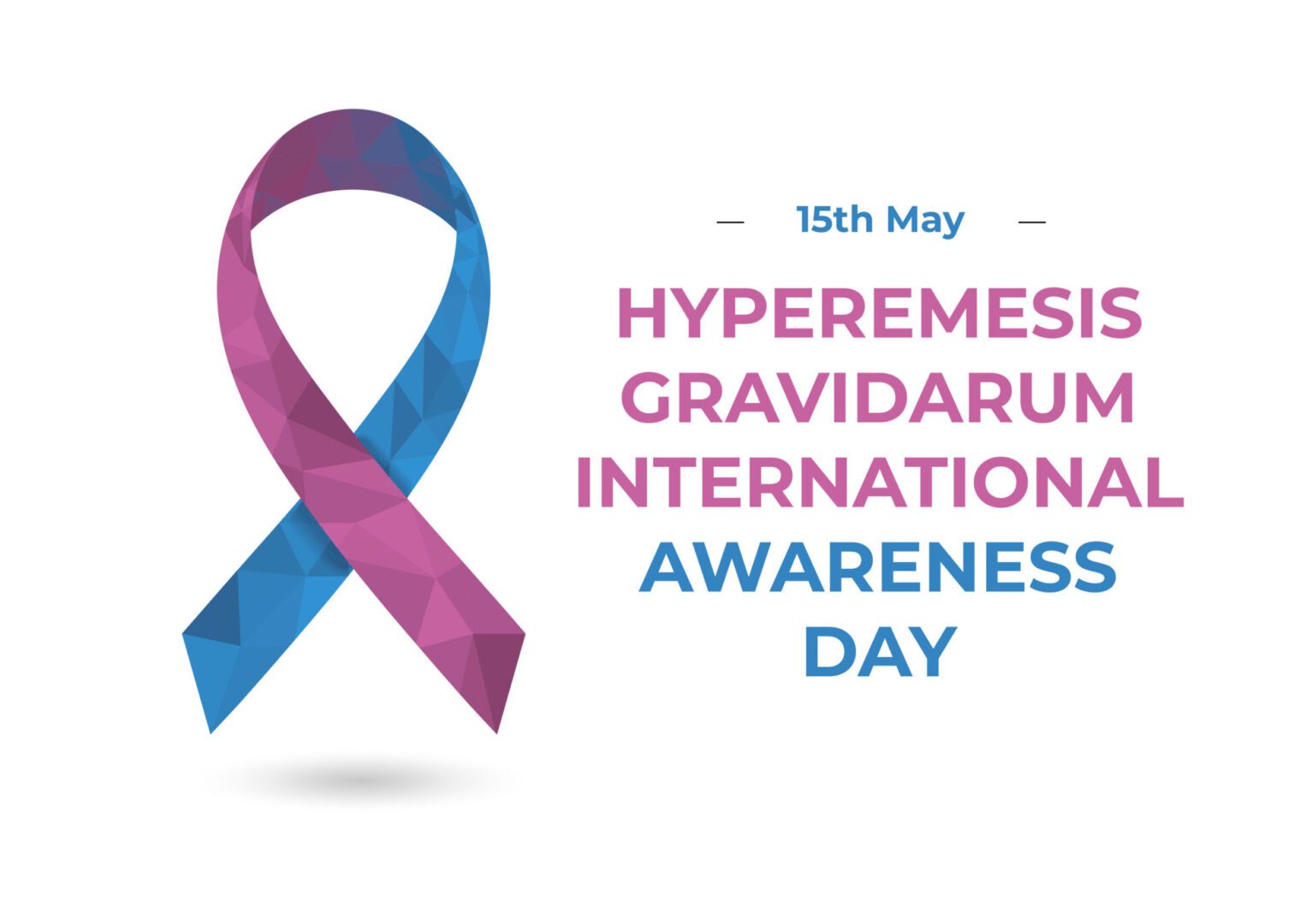Search by Color or Cause


On May 15, we mark Hyperemesis Gravidarum International Awareness Day. Hyperemesis Gravidarum is currently a topic that is relatively unexplored in global maternal health forums. However, this pregnancy complication merits attention because of the host of dangers it presents to both mothers and newborns.
Hyperemesis Gravidarum is not morning sickness. Hyperemesis Gravidarum is defined as a potentially life-threatening pregnancy disease that may cause weight loss, malnutrition, dehydration, and debility due to severe nausea and/or vomiting, and may cause long-term health issues for mother and baby. Wear a pink and blue ribbon or pin to raise awareness for Hyperemesis Gravidarum Awareness Day.
The criteria used to diagnose Hyperemesis Gravidarum often varies among health professionals and researchers. Patients who are very severe are typically hospitalized, representing the 1-3% of pregnancies estimated as having HG. However, very little research is done on the impact of hyperemesis as differentiated from morning sickness. Thus, the impact of HG may be greatly underestimated. One study found a 10.8% incidence of severe vomiting, and another study found 16% of pregnant patients using antiemetics.
There are hundreds, if not thousands, of additional people who terminate out of desperation when given inadequate treatment despite debilitating symptoms. Hyperemesis Gravidarum is not really a rare disorder.
Nausea and vomiting during pregnancy can be mild (morning sickness) or more severe (Hyperemesis Gravidarum). NVP impacts every aspect of a woman’s life. Research finds that the greater the severity and duration of symptoms, the greater the effect on the patient.
Research shows that patients with Hyperemesis Gravidarum have a higher risk of negative maternal and fetal outcomes. The greatest risk appears to be in patients who have more weight loss, severe symptoms, and/or who fail to gain weight for two consecutive trimesters. The data varies partly due to the inconsistent criteria used to diagnose and define hyperemesis and determine severity levels.
One challenge is weighing the risks of potential complications and misery with possible risks of anti-vomiting (antiemetic) therapies. Effective medications held until conservative measures fail delay needed treatment and may make vomiting more refractory.
There are a number of medications deemed safe with a long history of use. Yet, newer drugs often prove more effective, and do not significantly increase malformation rates.
Although medication research is increasing (e.g. ondansetron) most studies find risks to be very small. Unfortunately, published abstracts sometimes make the risk unclear. For example, one widely cited study finds a risk of cardiac defects, but the low rate doubled to less than 2%. Health professionals need to review the detailed data to determine the risks for their patients.
Beyond the fetal loss rate of 34%, children are at risk for numerous complications from Hyperemesis Gravidarum, especially if the symptoms are severe, prolonged, inadequately treated, or there is a delay in medical intervention. Specifically, weight loss over 15% of pre-pregnancy weight is highly predictive of adverse fetal impact.
The exact causation is not entirely clear but high cortisol levels and stress, micronutrient deficiencies (Vitamin K embryopathy, Wernicke’s encephalopathy), and inadequate maternal support, resources and access to care all play a role. Effective care is crucial. If HG patients are given early medical care enough to manage their symptoms and minimize nutritional deficiencies, both mother and child will be healthier now and in the future.
There are numerous theories regarding the etiologies of HG; however, only one is, as of yet, conclusive. A cause of HG is very difficult to determine and likely multifactorial including hormones and digestive function. Additionally, causes may vary between patients depending on biological make-up (genetics), body chemistry, fetal gender, and overall health. Collaborative genetics research definitively identifies genetic causes (e.g. GDF15 and PGR) influencing HG symptoms.